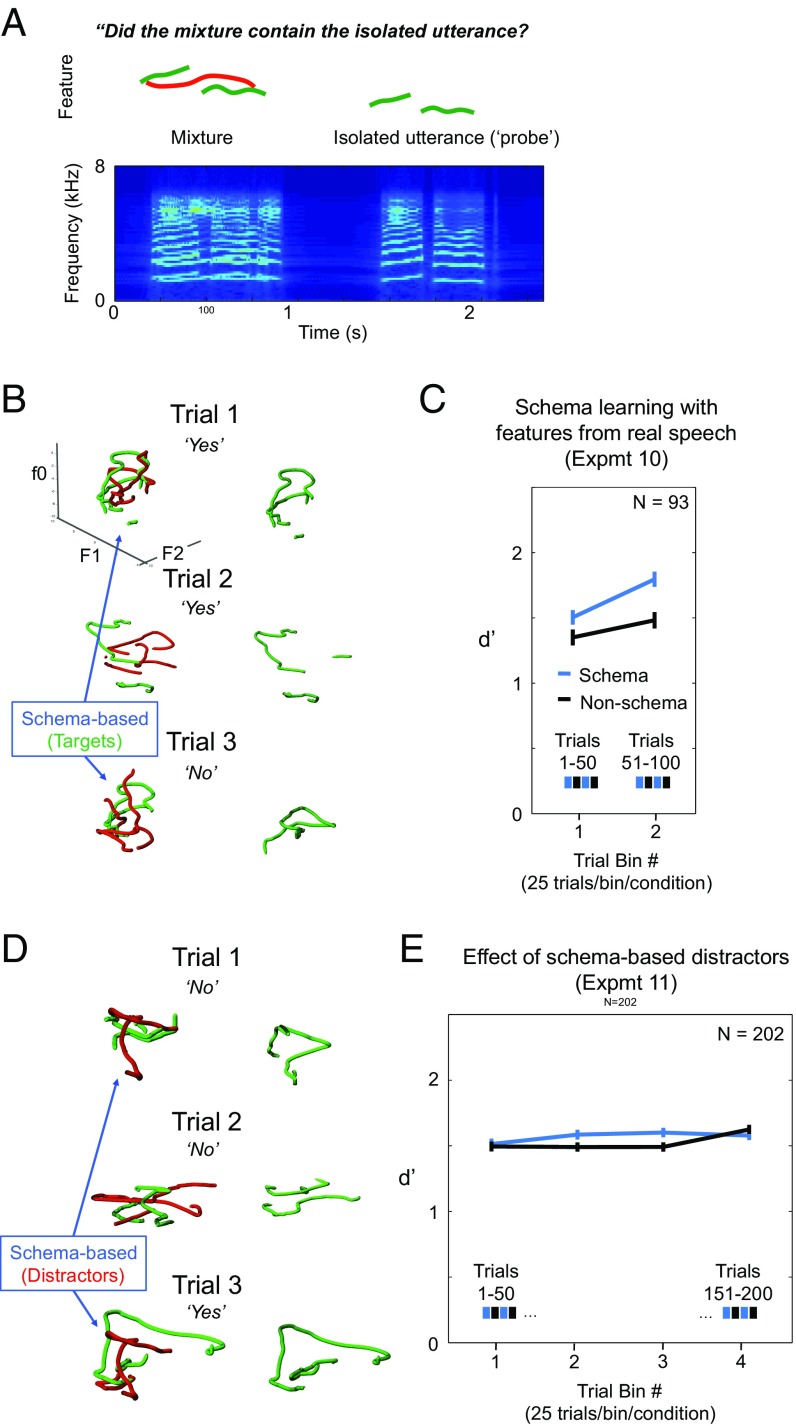Fig. 5.
Schema learning in the segregation of resynthesized speech utterances (paradigm 3). (A) Schematic of the trial structure (Upper) and a spectrogram of an example stimulus from experiments 10 and 11 (Lower). A target utterance (green curve) was presented concurrently with a distractor utterance (red curve) and was followed by a probe utterance (second green curve). The utterances were synthesized from the pitch and formant contours of speech excerpts. For clarity the schematic only shows variation in a single dimension. Because only the first two formants were used, and because unvoiced speech segments were replaced with silence, the utterances were unintelligible. Listeners judged whether the probe utterance had also appeared in the mixture. When this was the case, the probe utterance was transposed in pitch and formants from the target utterance in the mixture and was time-dilated or compressed. (B) Schematic of the structure of experiment 10. On every other trial the target utterance was generated from a common schema. Utterances are depicted in three dimensions. (C) Results of experiment 10: effect of schemas on the segregation of speech-like utterances (n = 89). Error bars here and in E denote the SEM. (D) Schematic of structure of experiment 11. On every other trial, the distractor utterance was generated from a common schema. (E) Results of experiment 11: effect of schema-based distractors (n = 202).

